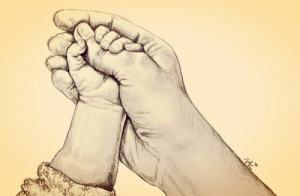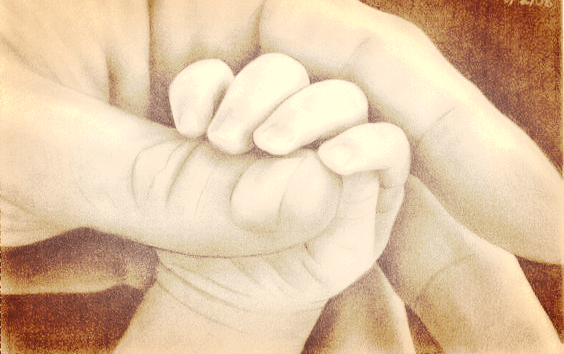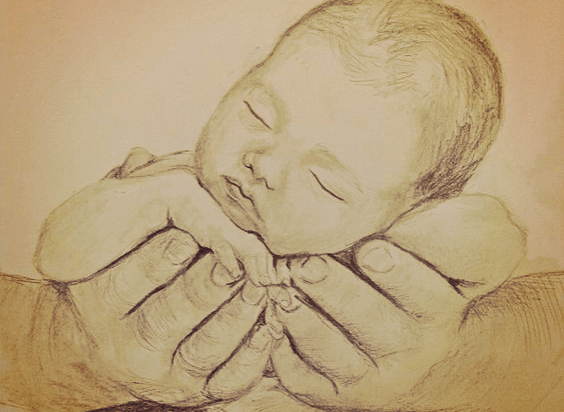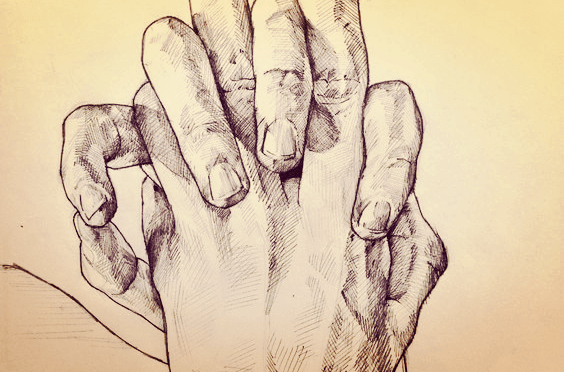When Your Baby's Tiny Hand Grabs Your Finger


Written and verified by the psychologist Valeria Sabater
It’s often said that it’s the little things in life that count the most. And for parents, one of the most magical and unforgettable moments is when your newborn baby grasps your finger for the first time, pressing it strongly in their tiny hand.
Childhood is measured by sounds and smells and sights…
-John Betjeman-
We are captivated forever – for the rest of our lives – by this instinctive gesture. It is the beginning that no parent can forget. It sets off emotions and beats within us forever.
It’s as if our baby recognizes us as part of their life, saying “now I have you, now you’re my mom, now you’re my dad.”
And all we can do is surrender to the evidence: the bond has been created and it can never be broken…
Once upon a time there was a tiny hand…

Once upon a time, strength, life and fear were contained in a small hand that searched for refuge.
All we had to do was place our finger in the palm of our newborn baby’s hand for him to grab on instantly, immediately, needing to be calmed and to feel safe.
We are part of them, and those tiny little beings are part of us…
The grasping reflex in babies
No emotional value can be taken away from this gesture when we say that this act is a response to a natural reflex. It is an instinct inherited from our ancestors.
Through this rapid response that causes our newborns to latch onto anything that touches their hands, our babies feel safe and secure.
In fact, they grab on so strongly that we can even stand them up and lift them while they are still holding onto our fingers.
- It’s natural, and is something that doctors themselves explore in newborns along with their other reflexes, which are undoubtedly necessary for their correct development.
- In fact, these reflexes soon disappear as the baby’s brain matures in order to allow him to manipulate and grab things with intent and greater precision.
Holding your little one’s hand during these first months is recommended
It’s very common for moms to hold onto their little one’s hand while breastfeeding, allowing their babies to squeeze mom’s finger.
During the first months of life, it’s common to observe that babies always have their fists clenched.
However, with time, you will notice amazing changes. For example, your baby no longer squeezes as tight, or he might even shake or wiggle your fingers when you offer them.
As this stimulation continues, this beautiful habit of grabbing our baby’s hands and caressing them while we nurse or when we bathe them will, without a doubt, cause them to make amazing leaps of maturity that contribute to their correct development.
By the eighth month, babies are already aware of their hands

Thanks to that sophisticated hand-eye coordination, you’ll notice that by the eighth or ninth month, your baby will no longer leave his hands at rest.
This is when our babies start to pull our hair and all of the sudden want to grab anything and everything that passes before their eyes and catches their attention.
During this stage, they no longer find pleasure in simply holding things. They love things that make noise.
They love for mom or dad to stretch out their hands while communicating with them, singing to them, whispering to them…
It’s an exceptional time when the child is receptive to a great deal of stimuli and where, very soon, he will further refine his pincer mechanism – the bringing together of the thumb and index finger in order to develop greater fine motor skills.
Our hands are a pathway to our emotions, a type of magical language

Feeling the hand of our partner offering support, affection, understanding, love… Taking our grandparent’s hand in ours to help them walk or while we talk with them to show them we are close…
All of this bestows a series of positive emotions that strengthen bonds and build meaningful relationships, as well as a sense of humanity where we recognize and care for one another.
The best way to make children good is to make them happy
-Oscar Wilde-
To touch is to feel. To touch the people that are important to us is to validate them through affection as well as recognize them as special beings in our hearts.
Therefore, we should never neglect the importance of stressing this language with our children.
What began as a story of magic and immense love when you first felt that tiny hand grasping your finger with so much strength cannot end there.
That is just the beginning of what should be a long story of caresses, attention, games, the turning over of the pages of a book, walking hand in hand…
Without a doubt, we will enjoy and value these moments. These moments are priceless.
All cited sources were thoroughly reviewed by our team to ensure their quality, reliability, currency, and validity. The bibliography of this article was considered reliable and of academic or scientific accuracy.
- Bowlby, J. (1986). Vínculos afectivos: formación, desarrollo y pérdida. Madrid: Morata.
- Bowlby, J. (1995). Teoría del apego. Lebovici, Weil-HalpernF.
- Garrido-Rojas, L. (2006). Apego, emoción y regulación emocional. Implicaciones para la salud. Revista latinoamericana de psicología, 38(3), 493-507. https://www.redalyc.org/pdf/805/80538304.pdf
- Marrone, M., Diamond, N., Juri, L., & Bleichmar, H. (2001). La teoría del apego: un enfoque actual. Madrid: Psimática.
- Moneta, M. (2003). El Apego. Aspectos clínicos y psicobiológicos de la díada madre-hijo. Santiago: Cuatro Vientos.
This text is provided for informational purposes only and does not replace consultation with a professional. If in doubt, consult your specialist.
